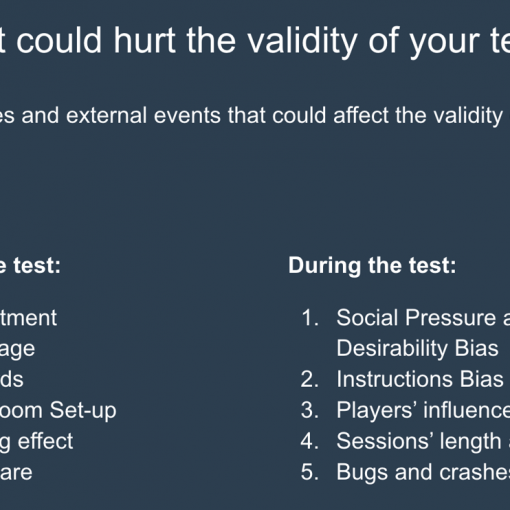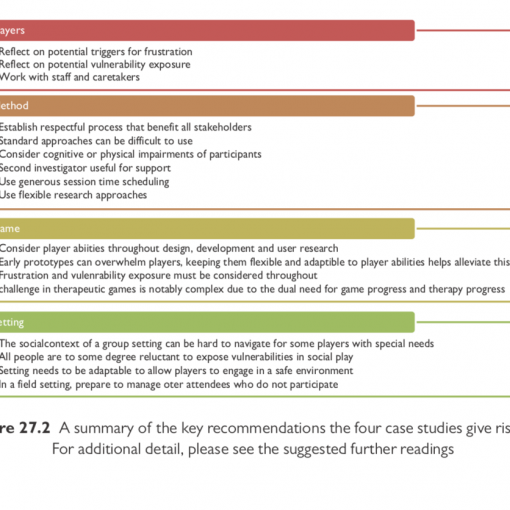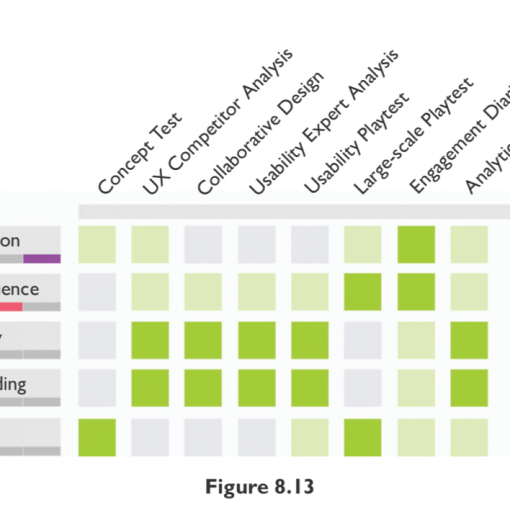Games User Research is filled with information about Game UX and Games User Research. Let’s walk you through some core ideas and concepts of user experience (UX) here.
What is Game UX?
Understanding and analyzing Game UX (or user experience in games or Games UX) is at the heart of building excellent and engaging video games. Games UX design relies on three main factors: context, players, and game systems. Video game designers can never build this experience in games directly. They create hardware or software, an artifact if you will, that is the game. In game design, this is known as a second-order design problem. We are only building the ‘thing’, not the experience that it creates. Games UX Researchers (or Games User Researchers) are well aware of this. Recently, the Game UX Summit showcased this. Games UX knowledge has also been coming out of the GUR Summits for years. But how do we create engaging Game UX? Here are tips for the three main aspects of Game UX:
Context
Engl and Nacke (2013) understand context as the external influences on games UX, such as time-based, location-based, social, and cultural factors. For example, your experience in the game depends on the time you have spent playing it as well as the time of day. You shape your game UX by the location that you play in and how much space you have available for play. This becomes more important as people are building games for virtual and augmented reality. As a result, real-world spaces are becoming parts of the game world. As many games have moved online towards multiplayer, social factors become ever-more important in games. Social protocols or interaction in games are key factors here. The social factor of UX also plays an important role in the cultural surroundings of a video game (and this cultural experience shapes your game UX as well. A Games User Researcher would have to investigate all influences on player experience to make optimal recommendations for building a successful video game (depending on the target audience of the game).
Players
In the paper mentioned above, players are another important factor in building game UX. This part of game UX is usually called player experience. This is beyond the social aspects of an experience. It looks at characteristics of players (such as their user types), but also at their internal influences. Imagine somebody is in a bad mood before playing your game and this happened during the day you have scheduled a playtest. It is really hard to control for this aspect of player experience, but if you study game UX, you have to be aware of this factor.
Game System
Finally, you have to be aware of hardware and software. Basically, it’s the underlying layer of functionality that your game is built upon. This is what we call the game system. We often label our research into this technical aspect as playability research. You can evaluate much of these technical parts using standard usability tests and observations. Often you can even check for the roughest errors using the heuristics that are featured in our book before running a full user test.
UX Takeaways
As you can see, understanding Game UX has a bit of complexity for games user researchers. Thus, we are excited that Games User Researchers now have a way of finding the best methods, tools, and overall information about how to do user research in games in our book.
Games User Research and Game UX
Buy our book on Amazon or order it directly from the publisher.




